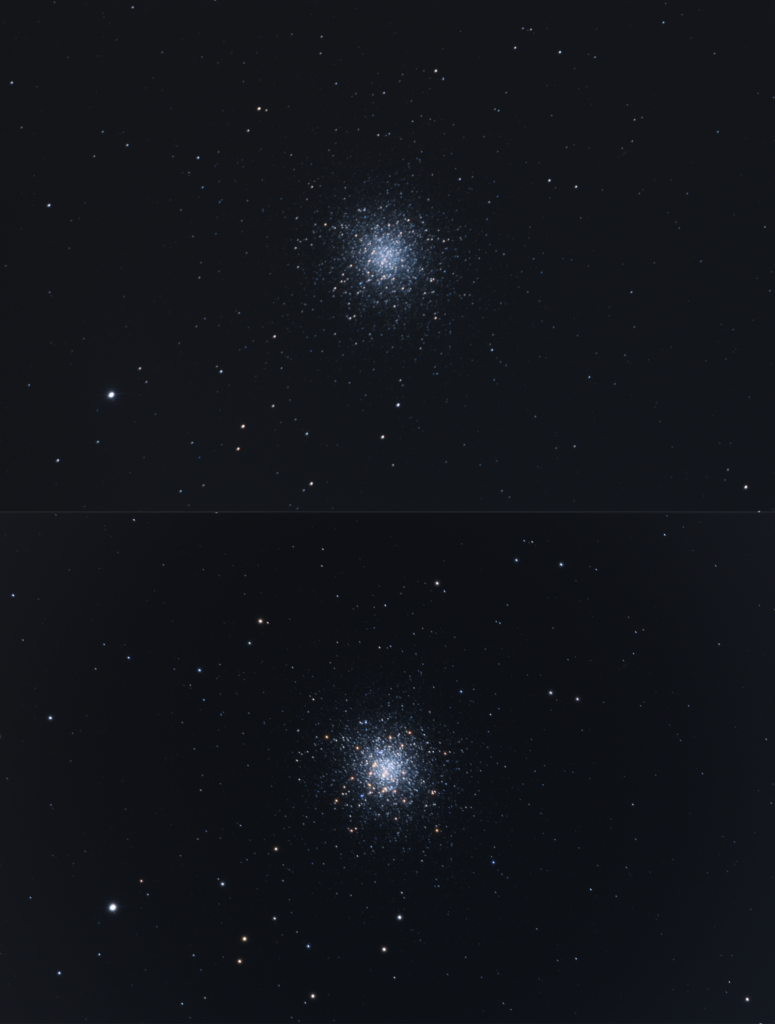I am constantly looking at different methods of processing images to develop better workflows and improve my images.
This is so I can see what different things work, and continue discovering new ways of processing images to improve the images.
When do process my images, I always try as hard as I can to make them look as natural looking as possible.
I always instil in people who attend my astrophotography workshops NOT to over-process their images.
As you can imagine, being such a purist, it really drives me mad to see so many really over-processed images popping up online and on social media, with all sorts of processing artefacts visible. But I am starting to think that I might be missing a real trick here.
In the early hours of the 20th of April, I was coming to the end of a short imaging session to capture Comet Leonard and some mono images.
I was desperate to try and get some RGB data to attempt a colour image with the setup I am trying out, but was short of bright objects to try it on.
I could see that Hercules was fairly high by this time, so despite the gathering murk, I though that I’d grab a few shots of The fantastic globular cluster M13.
I quickly rattled off a few shots using the three different coloured filters with the ZWO ASI183MM mono camera.
Now onto the processing.
It was never going to be a show-stopping image under those grotty conditions, but at least I got some RGB data to play with.
So, how did it turn out? The results are below.
The top image is a standard process using my tried and trusted technique.
The bottom image takes the processing a bit further, enhancing the brighter stars and their colours.
The bottom image, to my mind is well over-processed, but I felt that it does have something about it.
As an experiment, I thought I would put it to the test and posted them both on social media, asking which image folks preferred.
Apart from a few that liked the more natural looking top image, the vast majority of people who responded favoured the bottom image.
So this really was a eye-opener for me.
Does that mean I need to over-process my images to get more likes and shares, or should I stick to my principles?
What do you think folks?


No, It just means you should perhaps look at both options and choose the one that serves you best.
It is easy to get caught in the flashy colours and wow factor that over processing an image can give but at the end of the day I have learnt, in the short time i have been doing this, that astrophotography is not just a science but is indeed an art and artists will always present their works in different and sometime controversial ways.
Be the scientist or the artist you want to be but be considerate to the style opposite to path you choose 🙂
That is a really good point Andy.
Hi Dave, I always go for the over processed option it doesn’t have to be garish and full of artificial colours, just a little over is good enough, why not bring out everything that’s there isn’t that the idea to get the most from your kit, after all most of us have only modest kit and processing skills and we live in cloud soaked England so what we can get is precious. (great write up in SAN mag I love affinity) and your processing guides are a big help.
Thanks Neil. I’m glad you have found my articles and guides useful.
All the best.
Dave
One could argue that any image that shows stars as white is over exposed and the star images are saturated. The ‘natural’ view would show the star colours but would fail to show a lot of the fainter stars or the structure of the globular cluster. To me there is an argument that to present the science you need a selection of different processed results – you might even want to de-focus the image so the star colours can be seen.
Over processed images do not really annoy me what does is artists impressions without any explanation that is what they are and composite images created in graphics programmes being passed off as a ‘real’ image.